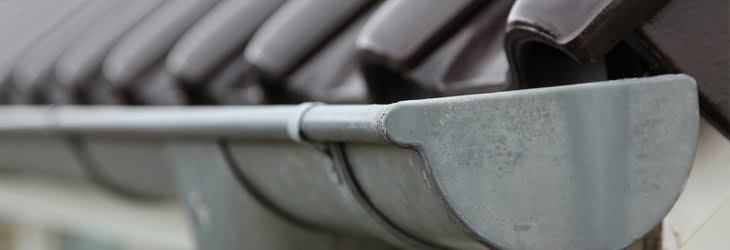HOW TO: Remove old guttering in 4 easy steps
15/06/2015

It’s time for another “How To” blog today. This time we’re looking at one of the most common household maintenance jobs – removing old guttering.
Keeping your guttering well maintained is really important. Leaves, dirt and debris that has run down your roof and into your gutter can lead to build ups and blockages in the system, which if not prevented can lead to big problems. Other signs that indicate your guttering needs replacing include the following:
- Cracks and splits – no matter how small they are
- Paint peeling on or around your gutters
- Pools of water or mildew near the foundation
- Water damage / water marks beneath the gutters
- Sagging gutters
Over time, gutters age and wear and tear will happen. At some point it will need replacing – but this DIY job is not quite as hard as it sounds…
Foolproof guide to removing guttering
Step one
You don’t want further damage to occur when removing guttering, so make sure the fascia board stays secure by hammering some large nails under the section of guttering that is going to be removed. This should keep everything in place and make the whole process of removing guttering a fairly painless job. When you’ve finished the job, you’ll also need to remember to repair the fascia board and remove any nails / fill any holes.
Step two
Using a hacksaw (and wearing the appropriate PPE!) cut through the bolts that join together the sections of gutter. Once you’ve done this, the bolts can be tapped out and removed with a nail punch and hammer.
Step three
Harness the guttering you want to remove by tying a rope around each of the sections you are planning to take out. Break apart the gutter joint and unscrew the brackets that are holding this section of guttering to the fascia.
Step four
Using the ropes you set up in step three, carefully lower the section of gutter to the ground. Repeat this process to remove all the sections and then take off the downpipes one at a time. Once you’ve done this, you’ll also need to remove the pipe nails – using pincers or a crowbar.
Throughout this process, keep health and safety in mind. If you’re using a ladder, make sure it’s on firm, flat ground and in good working condition. Don’t be afraid to get the help of a friend, family member or colleague either. Ideally someone should be holding the ladder for you. You can also help yourself by maintaining a balanced centre of gravity inside the rungs and making sure at least three rungs are overlapping if using an extension ladder.
Why not read our post on How To: Use a ladder correctly here? We’ve got lots of other tips and advice too, from choosing the best ladder accessories to completing DIY jobs around the home!